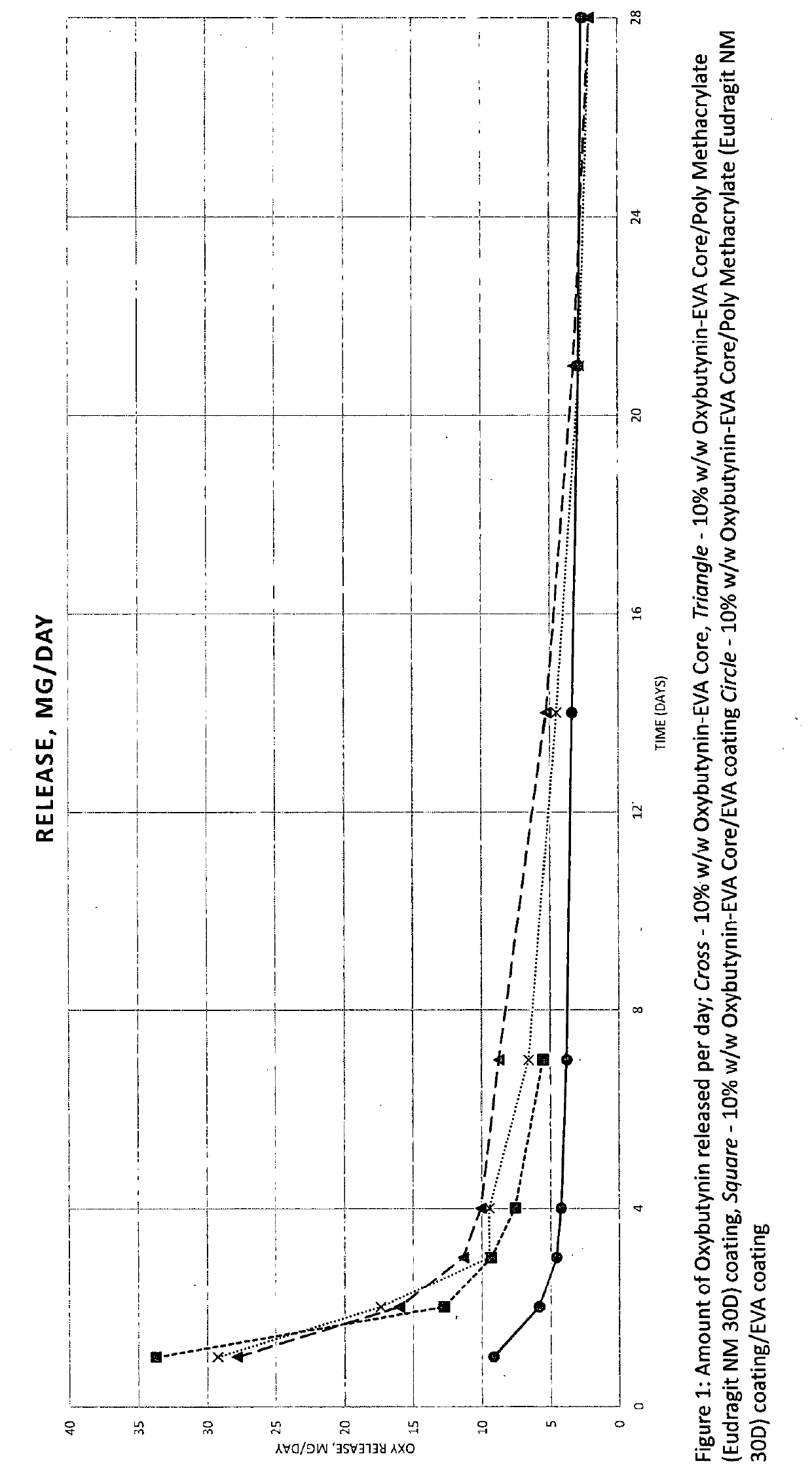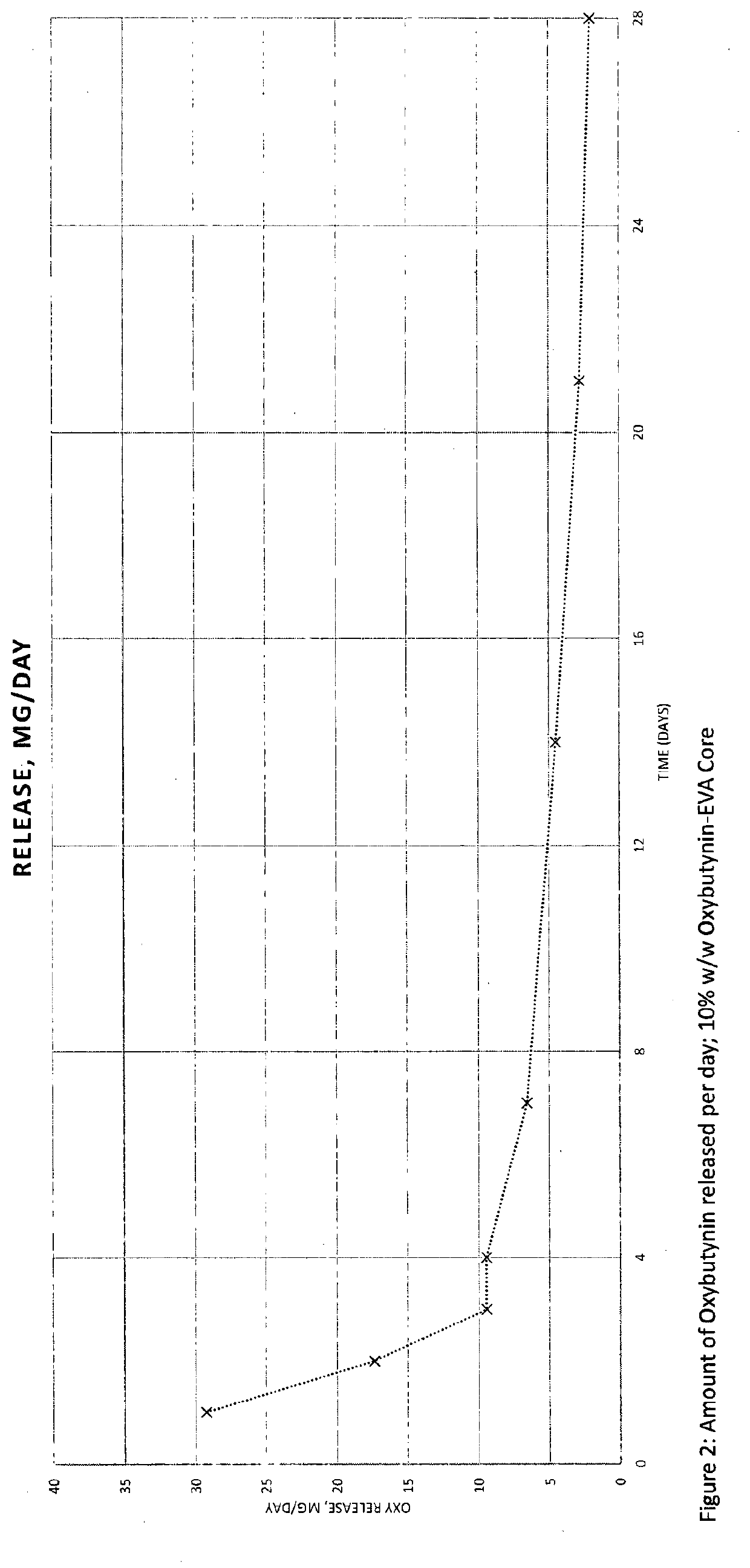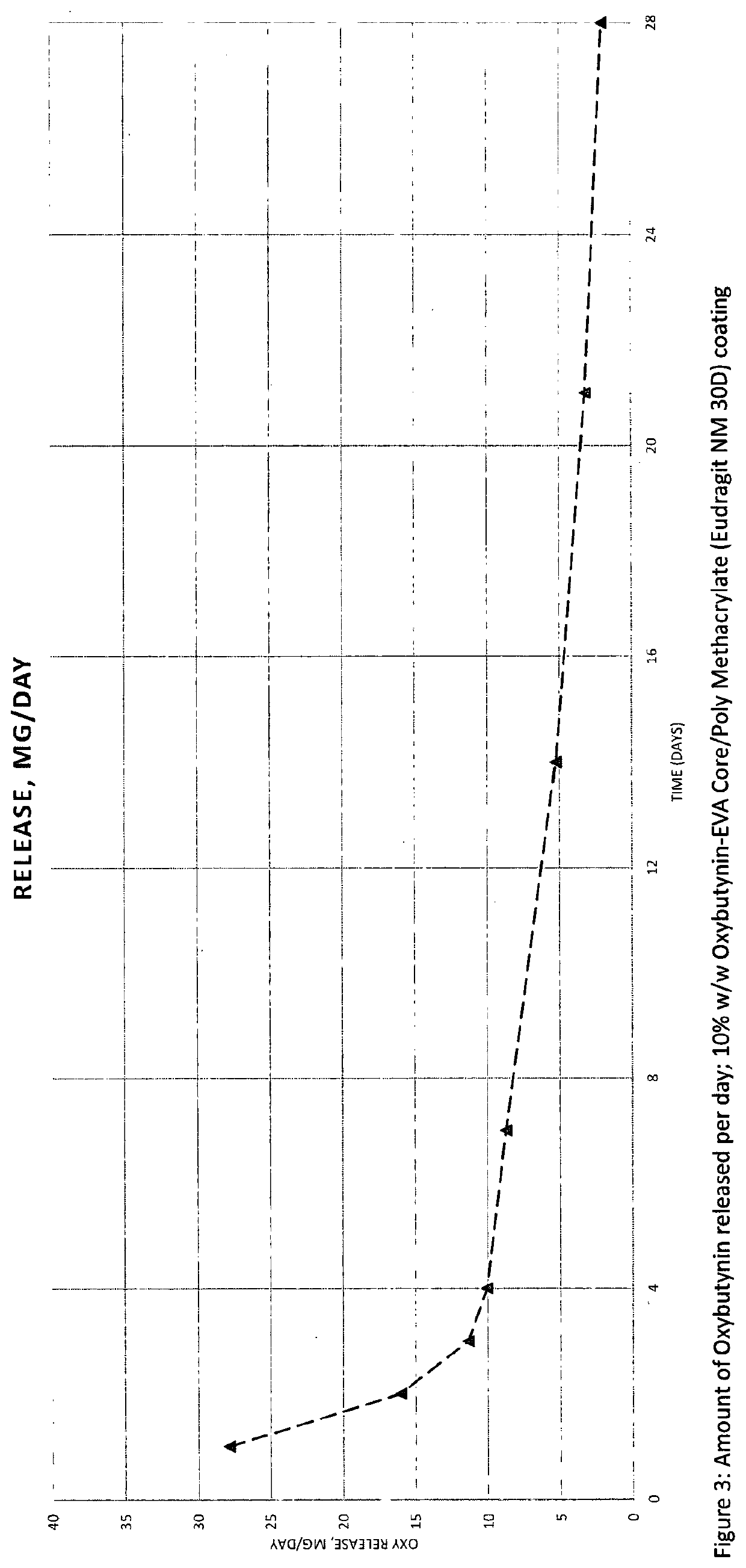Implantable drug delivery device
a drug delivery and implantable technology, applied in medical science, organic active ingredients, pharmaceutical non-active ingredients, etc., can solve the problems of high difficult control of active agent release from implantable devices, and discontinuation of treatment, so as to reduce the initial burst of drug, prevent moisture ingress, and improve the effect of controlled releas
- Summary
- Abstract
- Description
- Claims
- Application Information
AI Technical Summary
Benefits of technology
Problems solved by technology
Method used
Image
Examples
example 2
In-Vitro Dissolution of Example 1
[0066]In-vitro dissolution was performed on the intravaginal rings of Example 1 in 200 mL acetate buffer pH 4.1 at 37° C., and 100 rpm over a 28 day period using shaking incubator. Dissolution samples were typically taken after 1, 2, 3, 4, 7, 14, 21, 28 days. Dissolution samples were analysed by HPLC.
Example 3: 10% w / w Oxybutynin-EVA (28% VA Content) Core / Eudragit NE 30D Coating / EVA (40% VA Content) Coating
[0067]A 10% w / w blend of Oxybutynin base and EVA (28% VA content) was prepared and hot melt extruded at 110° C., to produce a solid solution, and pelletised. The pellets were injection moulded using a barrel temperature of 95° C. and a tool temperature of 35° C. to form a ring. Eudragit NE 30D solution / dispersion was deposited on the 10% w / w Oxybutynin-EVA core to form a coating with an approximate thickness of 50-100 μm. A solution of EVA (40% VA content) was deposited on the Eudragit NE 30D coating to form a coating with an approximate thickness ...
example 4
In-Vitro Dissolution of Example 3
[0068]In-vitro dissolution was performed on the intravaginal ring of Example 3 in 200 mL acetate buffer pH 4.1 at 37° C., and 100 rpm over a 28 day period using shaking incubator. Dissolution samples were typically taken after 1, 2, 3, 4, 7, 14, 21, 28 days. Dissolution samples were analysed by HPLC.
Example 5: 20% w / w Oxybutynin-EVA (28% VA Content) Core / Eudragit NM 30D Coating / EVA (40% VA Content) Coating
[0069]A 20% w / w blend of Oxybutynin base and EVA (28% VA content) was prepared and hot melt extruded at 110° C., to produce a solid solution, and pelletised. The pellets were injection moulded using a barrel temperature of 90° C. and a tool temperature of 35° C. to form a ring. Eudragit NM 30D solution / dispersion was deposited on the 20% w / w Oxybutynin-EVA core to form a coating with an approximate thickness of 50-100 μm. A solution of EVA (40% VA content) was deposited on the Eudragit NM 30D coating to form a coating with an approximate thickness o...
example 6
In-Vitro Dissolution of Example 5
[0070]In-vitro dissolution was performed on the intravaginal ring of Example 5 in 200 mL acetate buffer pH 4.1 at 37° C., and 100 rpm over a 28 day period using shaking incubator. Dissolution samples were typically taken after 1, 2, 3, 4, 7, 14, 21, 28 days. Dissolution samples were analysed by HPLC.
PUM
| Property | Measurement | Unit |
|---|---|---|
| thickness | aaaaa | aaaaa |
| thickness | aaaaa | aaaaa |
| thickness | aaaaa | aaaaa |
Abstract
Description
Claims
Application Information
 Login to View More
Login to View More - R&D
- Intellectual Property
- Life Sciences
- Materials
- Tech Scout
- Unparalleled Data Quality
- Higher Quality Content
- 60% Fewer Hallucinations
Browse by: Latest US Patents, China's latest patents, Technical Efficacy Thesaurus, Application Domain, Technology Topic, Popular Technical Reports.
© 2025 PatSnap. All rights reserved.Legal|Privacy policy|Modern Slavery Act Transparency Statement|Sitemap|About US| Contact US: help@patsnap.com



